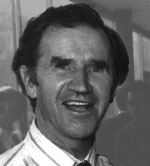
SAIL Concept Maps and Lists of Activities
In SAIL Volume 2 there are eighteen networks, each of which consists of learning activities organized by means of concept maps. Seventeen of the SAIL Volume 2 concept maps are also included in SAIL Volume 1. Each concept map shows how the ideas of that network relate to each other, and in particular, which ones need to be understood before later ones can be acquired with understanding. These interdependencies are shown by arrows. A suggested sequence through the network is shown by the numbers against each topic. Use of the concept map will help to decide whether other sequences may successfully be followed, e.g., to take advantage of children's current interests. The concept map is also useful diagnostically. Often a difficulty at a particular stage may be traced to a child's not having properly understood one or more earlier concepts, in which case the concept map will help to find out which these are. Another function of the concept maps is to help individual teachers to see where their own teaching fits into a long-term plan for children's learning, throughout the elementary school years: what they are building on, and where it is leading.
Following each concept map is a list of the activities for each topic. They are called 'topics' rather than 'concepts' because some topics do not introduce new concepts, but extend existing ones to larger areas of application. Usually these activities should be used in the order shown.
The codes for each topic and activity are for convenience of reference. They show where each fits into the whole. Thus Num 3.8/2 refers to Network Num 3, Topic 8, Activity 2.
Following is a list of the names of the eighteen SAIL Networks and their corresponding Concept Maps. Three of the concept maps and their corresponding lists of activities can be viewed by clicking the appropriate hypertext. The other concept maps can be found in SAIL Volume 1 or SAIL Volume 2.
- Org 1 Set-based organization
- Num 1 Numbers and their properties
- Num 2 The naming of numbers
- Num 3 Addition
- Num 4 Subtraction
- Num 5 Multiplication
- Num 6 Division
- Num 7 Fractions
- Space 1 Shape
- Space 2 Symmetry and motion geometry
- NuSp 1 The number track and the number line
- Patt 1 Patterns
- Meas 1 Length
- Meas 2 Area
- Meas 3 Volume and capacity
- Meas 4 Mass and weight
- Meas 5 Time
- Meas 6 Temperature